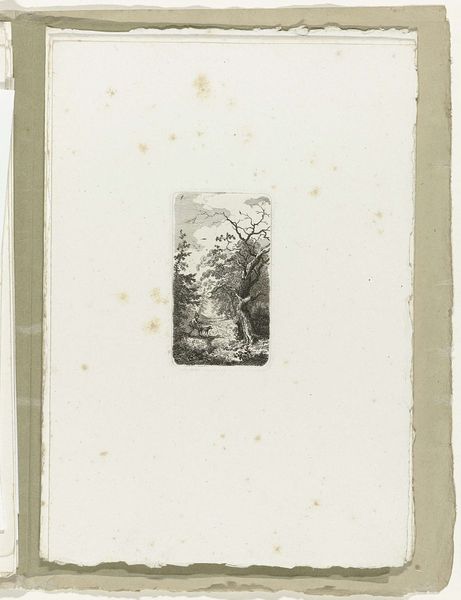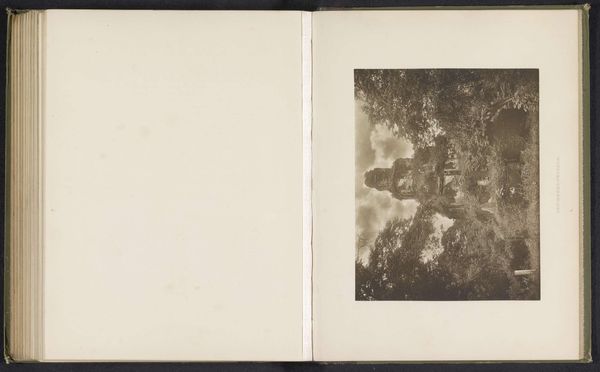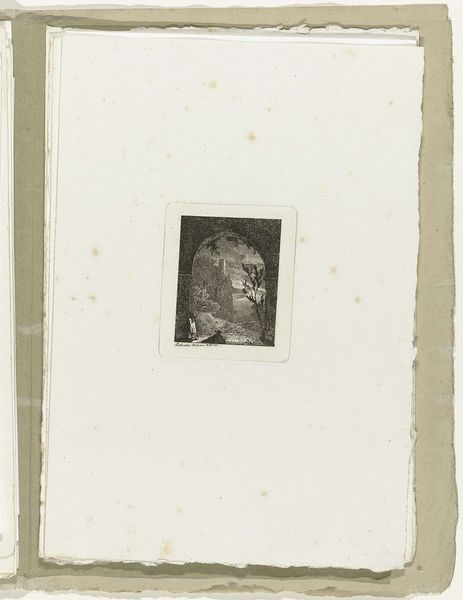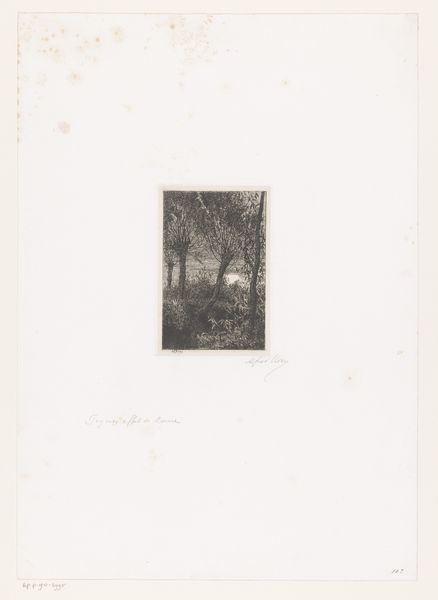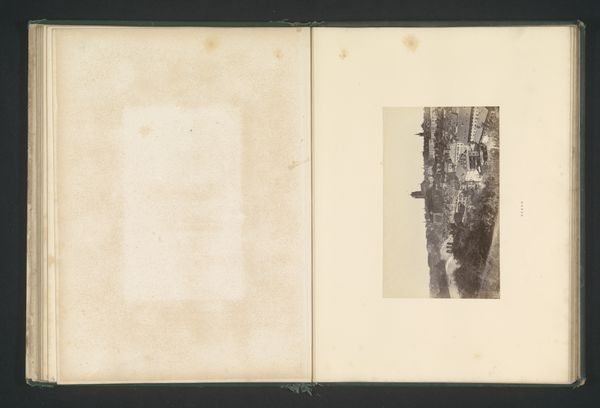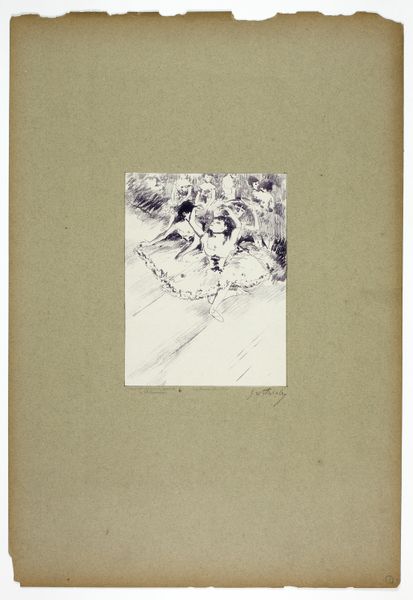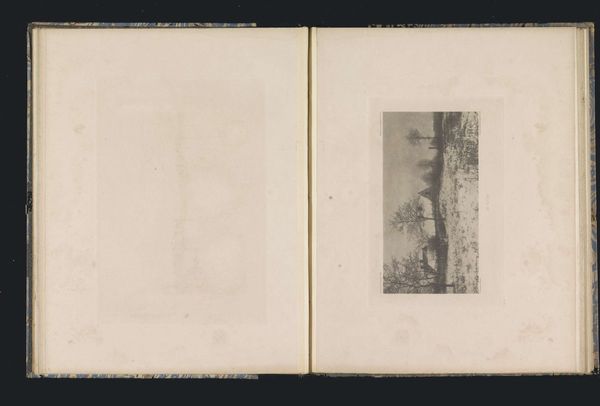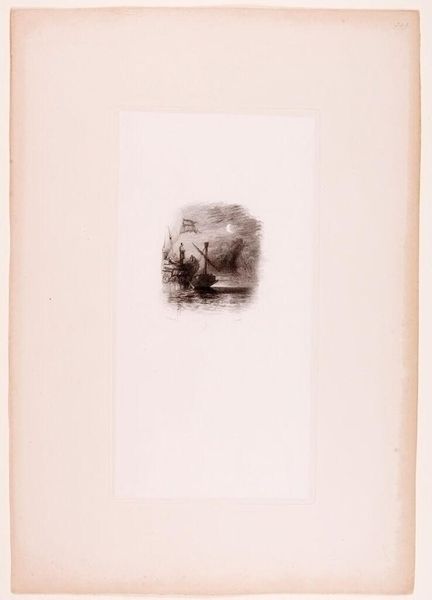
print, engraving
# print
#
landscape
#
romanticism
#
engraving
#
realism
Dimensions: height 79 mm, width 65 mm, height 280 mm, width 181 mm
Copyright: Rijks Museum: Open Domain
Curator: Let’s take a look at Carl August Lebschee’s “Planten en insecten langs een beek,” or “Plants and Insects by a Brook,” created in 1827. It's an engraving, showcasing a vivid streamside scene. What are your first thoughts? Editor: It feels so contained, doesn't it? Almost like a vignette plucked from a larger narrative. I’m drawn to how such a small piece captures the feeling of a dense, overgrown natural space. There's something melancholic about it, a fleeting moment preserved. Curator: That encapsulation really strikes me too. Given the period—the rise of industrialization and Romanticism—I see it as more than just an aesthetic choice. Think of the symbolic weight carried by landscapes then: nature as refuge, as spiritual solace. Editor: Absolutely. And there's an interesting tension. Realism is tagged as a style here. However, that pursuit of representing the natural world clashes with the romanticized ideal of it. Does Lebschee intend this tension or ignore it? Curator: Well, the detail definitely pushes toward a commitment to realistic representation. But look closely, how nature, the insects, plants and water intertwine into almost abstracted forms and shapes: does that signal the idealized, spiritual sense you mentioned? The landscape genre had a cultural importance that goes well beyond simple botanical observation. Editor: The visual impact seems incredibly pertinent in the 19th century: an escape, even in miniature. What sociopolitical climates drove the romantic interest in finding spiritual truth through depictions of an unspoiled natural world? Who had access to leisure and artwork ownership during Lebschee's time, as well? I wonder who consumed this artwork and why. Curator: Such considerations take it into meaningful context. To me, it speaks about cultural memory through image. The choice of plants, the particular angle on the water…there's an accumulated visual knowledge embedded here. Editor: I agree. The layering of time – both in the image itself and in its reception across history – is what makes it resonate. Thanks for pulling out the layers! Curator: My pleasure! This was an insightful jaunt into Lebschee’s romantic perspective.
Comments
No comments
Be the first to comment and join the conversation on the ultimate creative platform.
